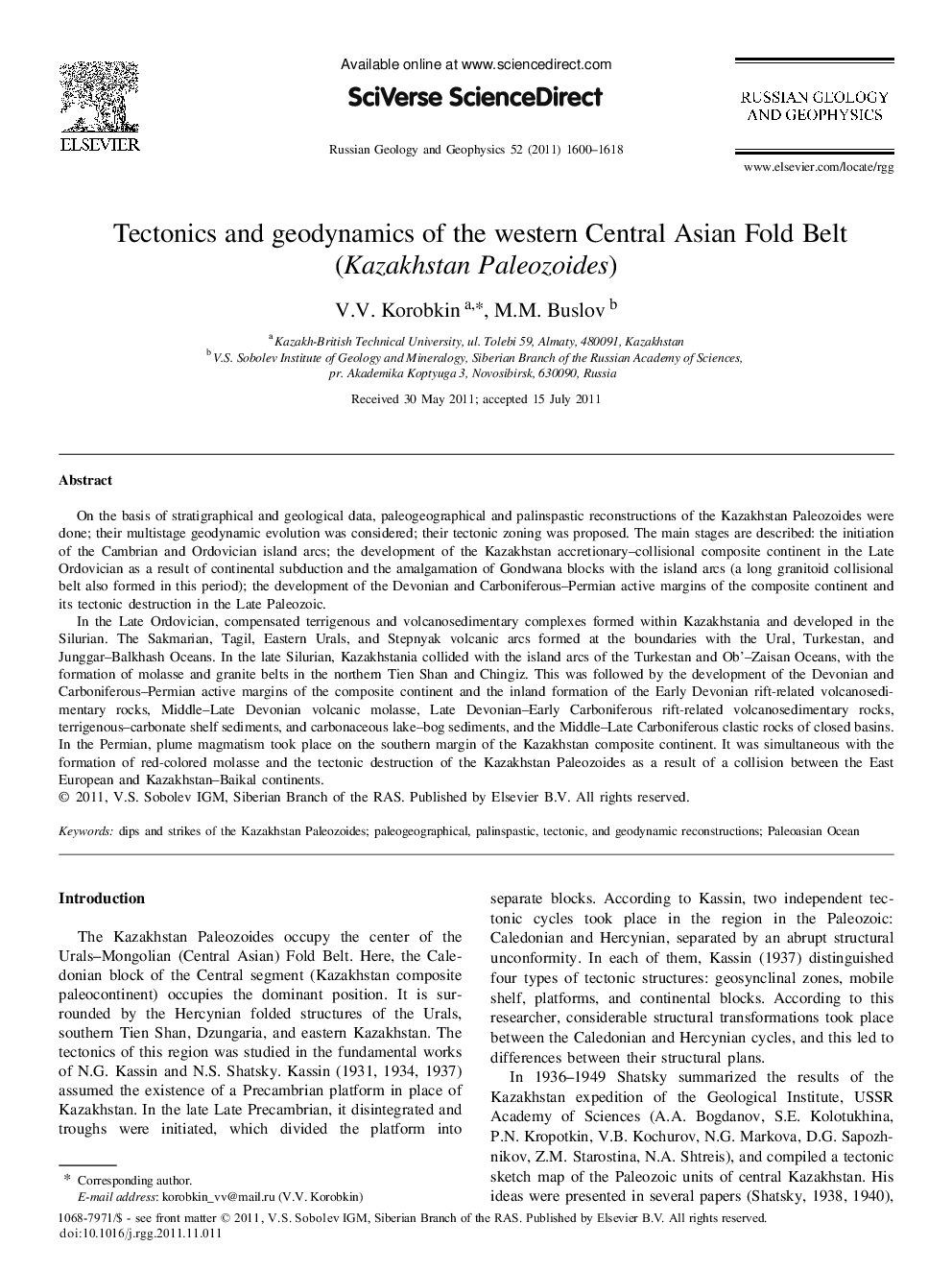| کد مقاله | کد نشریه | سال انتشار | مقاله انگلیسی | نسخه تمام متن |
|---|---|---|---|---|
| 4738551 | 1358325 | 2011 | 19 صفحه PDF | دانلود رایگان |

On the basis of stratigraphical and geological data, paleogeographical and palinspastic reconstructions of the Kazakhstan Paleozoides were done; their multistage geodynamic evolution was considered; their tectonic zoning was proposed. The main stages are described: the initiation of the Cambrian and Ordovician island arcs; the development of the Kazakhstan accretionary–collisional composite continent in the Late Ordovician as a result of continental subduction and the amalgamation of Gondwana blocks with the island arcs (a long granitoid collisional belt also formed in this period); the development of the Devonian and Carboniferous–Permian active margins of the composite continent and its tectonic destruction in the Late Paleozoic.In the Late Ordovician, compensated terrigenous and volcanosedimentary complexes formed within Kazakhstania and developed in the Silurian. The Sakmarian, Tagil, Eastern Urals, and Stepnyak volcanic arcs formed at the boundaries with the Ural, Turkestan, and Junggar–Balkhash Oceans. In the late Silurian, Kazakhstania collided with the island arcs of the Turkestan and Ob'–Zaisan Oceans, with the formation of molasse and granite belts in the northern Tien Shan and Chingiz. This was followed by the development of the Devonian and Carboniferous–Permian active margins of the composite continent and the inland formation of the Early Devonian rift-related volcanosedimentary rocks, Middle–Late Devonian volcanic molasse, Late Devonian–Early Carboniferous rift-related volcanosedimentary rocks, terrigenous–carbonate shelf sediments, and carbonaceous lake–bog sediments, and the Middle–Late Carboniferous clastic rocks of closed basins. In the Permian, plume magmatism took place on the southern margin of the Kazakhstan composite continent. It was simultaneous with the formation of red-colored molasse and the tectonic destruction of the Kazakhstan Paleozoides as a result of a collision between the East European and Kazakhstan–Baikal continents.
Journal: Russian Geology and Geophysics - Volume 52, Issue 12, December 2011, Pages 1600-1618